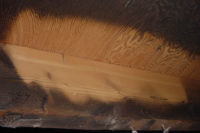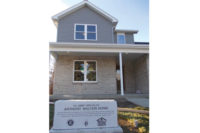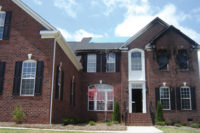Ever heard the saying, “There’s no such thing as a stupid question?” Never a work day passes that I don’t consult with at least one abrasive blasting customer, more often several. These mostly intelligent, pretty-well informed guys and gals come up with all kinds of questions ranging from the simple and easily answered to complex and down-right bizarre. Of course, the things that people ask are different depending on their industry, but when it comes to creating questions, the restoration and remediation industry is no slouch. I field questions from all over North America from some of the best (and otherwise) contractors in the business. Whether the inquiries are simple and straightforward, or off-the-wall unique, there are some common themes amongst the confusion.
Answering questions is one thing, giving good advice… well that’s another. After almost 20 years in the business, I’ve learned from mistakes – both mine, but more importantly, the mistakes of others. I’ve seen what works in successful applications, and what fails in others. What I’ve learned to do is give advice that leads to a successful outcome, based on those past successes and failures. There are always exceptions to the rule, and one answer doesn’t always fit every situation, however, there are some questions that come up so often that the same answer is the only thing to give. When writing this article I wanted to clear up as many common questions as possible. When trying to list them, and get my arms around them, I realized that the task would be immense. Certainly too big for the space I’m allowed here. Out of this realization, I will simply attempt to clear up just 3 common misconceptions about blasting for restoration.
Misconception No. 1: How Do I Bill?
Misconception No. 1 involves a simple concept. It’s a question that every restoration contractor that uses blasting must answer – do I bill by the square footage of the structure (foundation), or the actual square footage of cleaning?
Most come up with the right answer without any hesitation or consultation. This question came up recently, however, from a contractor that thought he knew the answer.
Terry Cripe, owner of Terry’s Cleaning & Restoration in Goshen, Indiana, called to inquire about exactly this. He and his team aren’t new to the media blasting game with several successful blasting jobs under their belt, including fire restoration and mold remediation. Why would they suddenly ask this seemingly simple question? It turned out they were in the midst of a restoration project at a residential fire loss. They were called in immediately following the fire loss by an insurance adjuster they knew from past, albeit smaller, jobs.
Initially, everything went along like any other fire loss, until the adjuster presented his “scope of work” to Terry. The amount of blasting specified, and the accompanying revenue, were both minimal based on the conditions and the actual amount of area to be cleaned. How could the estimate from the adjuster specify just 1,700 square feet of blasting? It was obvious that the area to be cleaned with blasting would be much greater than that. Very quickly, Terry discovered that the estimate was based simply on the foundation size of the house, not the actual surface areas. These surfaces – roof decking, trusses, joists, walls, etc. – all add up to the square footage to be cleaned, or the billable amount (Image 1).
Accepted insurance/restoration industry estimating programs almost always base the billing on the actual square footage that the contractor cleans. Coincidentally, most programs also differentiate between levels of cleaning (i.e. “regular,” “heavy,” and “extra-heavy” media blasting) with different billing amounts. His consultation simply confirmed his previous thought that he was correct and the estimate from the adjuster needed some adjustment. Obviously, the accurate calculation of total square footage is important to everyone involved.
Misconception No. 2: Blasting is Too Dirty
Misconception No. 2 comes directly from the problems many encounter when using media blasting: the misconception that media blasting is too “dirty” or “dust-producing” to be manageable indoors. We can learn much about this from the trials and errors that some contractors struggle through, compared to the successes of those that prosper in the same circumstance.
This scenario is seen clearly in the use of media blasting - baking soda blasting to be specific - in an attic, crawlspace or other difficult space. Whether it’s mold remediation or fire restoration, the airborne dust and debris from blasting can be overwhelming, literally blocking visibility and stopping production. I’ve always taught that there are three things that can be done to overcome this problem:
1. Limit the amount of baking soda being “thrown” by the machine. Generally this is solved by using a quality blasting system, with good nozzle technology. (See Image 2)
2. Excellent lighting of the work area is equally important to visibility and productivity. Both good area lighting and an intense light for the blast nozzle are called for with this type of blasting. (See Image 3) Modern, high-intensity LED lights are effective and becoming more affordable every day.
3. Ventilation of the containment area, probably the most important of the three, can be accomplished in a number of ways.
A recent project started out with a question from new prospective customer about the possibility of blasting a moldy attic with baking soda. This contractor, David Myrick of Valor Cleaning in Springfield, VA, called with a question after attending a mold remediation seminar, with an actual demonstration of the baking soda blasting process inside a convention hall.
“The containment in the hall was very good, but could this be repeated in an attic?” he wondered aloud.
I took this as a challenge. Based on a confidence earned from previous successful jobs of this sort with numerous contractors, and the knowledge of what had failed, I told him to use our demonstration program (similar to a rental) to try this out. At his “start-up training session” we discussed, then deployed, a vane-axial type fan (rated at 2100 CFM with 3” of static pressure) ducted to a large cotton sateen dust sock (covered with a tarp to prevent problems with forecasted rain) on the exterior of the structure. (Images 4 and 5)
Generally we recommend “turning the air over” about once every two minutes. To calculate the fan requirement, simply take total cubic footage of contained area (approximately 20x36’ with an average height of 6’ equals 4,320 cubic feet total) divided by 2 (turn-overs per minute) equals the approximate total CFM requirement (2160 CFM) for the fan(s).
Done properly, with attention paid to sealing-up critical barriers and gaps in the structure, the resulting containment should also have a negative pressure (approximately – 2.5 pascal, or greater) relative to the rest of the structure.
With the containment set up and the machine training completed, the blasting commenced. Visibility was constantly in check and not a problem. Blasting proved to be very effective and fast, due mainly to the abrasive removal of the source material (mold). Not a chemical reaction, but true source removal. The process was completely contained, and no breaches were noted. HEPA vacuuming completed the removal process. Not only was the containment and implementation of the process successful, (Images 6 and 7) but the contractor has since utilized the same equipment and procedures for other similar applications with great success.
Misconception No. 3: Blasting Outdoors
The last media blasting misconception also revolves around the concept of dust and dust control or the question of how to blast outdoors without making a huge dust cloud / mess.
When blasted against a surface, the media particles breakdown, or fracture, into finer, “dustier” particles. All traditional media fractures, to some degree or another, when blasted. This fracturing - referred to as “friability” - indicates how easily particles fracture when blasted against a surface, as with air blasting. This fracturing has both a positive and a negative side. The positive: by fracturing on contact with a surface, the energy of the particle is dissipated. Imagine a snowball’s impact. “Thrown” with the same velocity the friable, lightly-packed snowball (soft media particle) transfers less energy into the target than a less friable, tightly-packed “iceball” (hard media). Baking soda’s extreme friability is the reason we see little to no damage to blasted substrates (i.e. wood, brick and mortar, etc.) and other materials (i.e. wiring, ducting, etc.). The effectiveness on exterior jobs like fire losses, masonry cleaning, and graffiti removal are well documented.
The negative side of friability, however, means that this breakdown of particles creates “dust.” Many restoration job sites are in suburban settings and don’t allow for open blasting with un-suppressed dust blowing through the neighborhood. The introduction of water at the nozzle is a concept that has been around for some time now. Historically, the problem with wet blasting has been in the clean-up of large quantities of wet blast media. With the advent of water-soluble baking soda blast media, and the associated equipment to blast it in small quantities, came a new tool for exterior restoration jobs. Not only is water used quite effectively for dust control during blasting (Image 8), it’s also the method used for clean-up. (Images 9 and 10) Environmentally sensitive baking soda can generally be solubilized with water and rinsed into the soil, or sanitary sewer. In cases where this is not acceptable, the waste run-off can be dammed and collected using standard water extraction methods.
As you can see, the misconceptions are not really that hard to understand. Don’t let someone else’s failure keep you from being successful. Learn from the mistakes, and successes, that others have made. Be successful yourself with blasting. Surely, you’ll have questions along the way. When you do, ask. Remember, the only stupid question is the one that remains unasked.















Report Abusive Comment